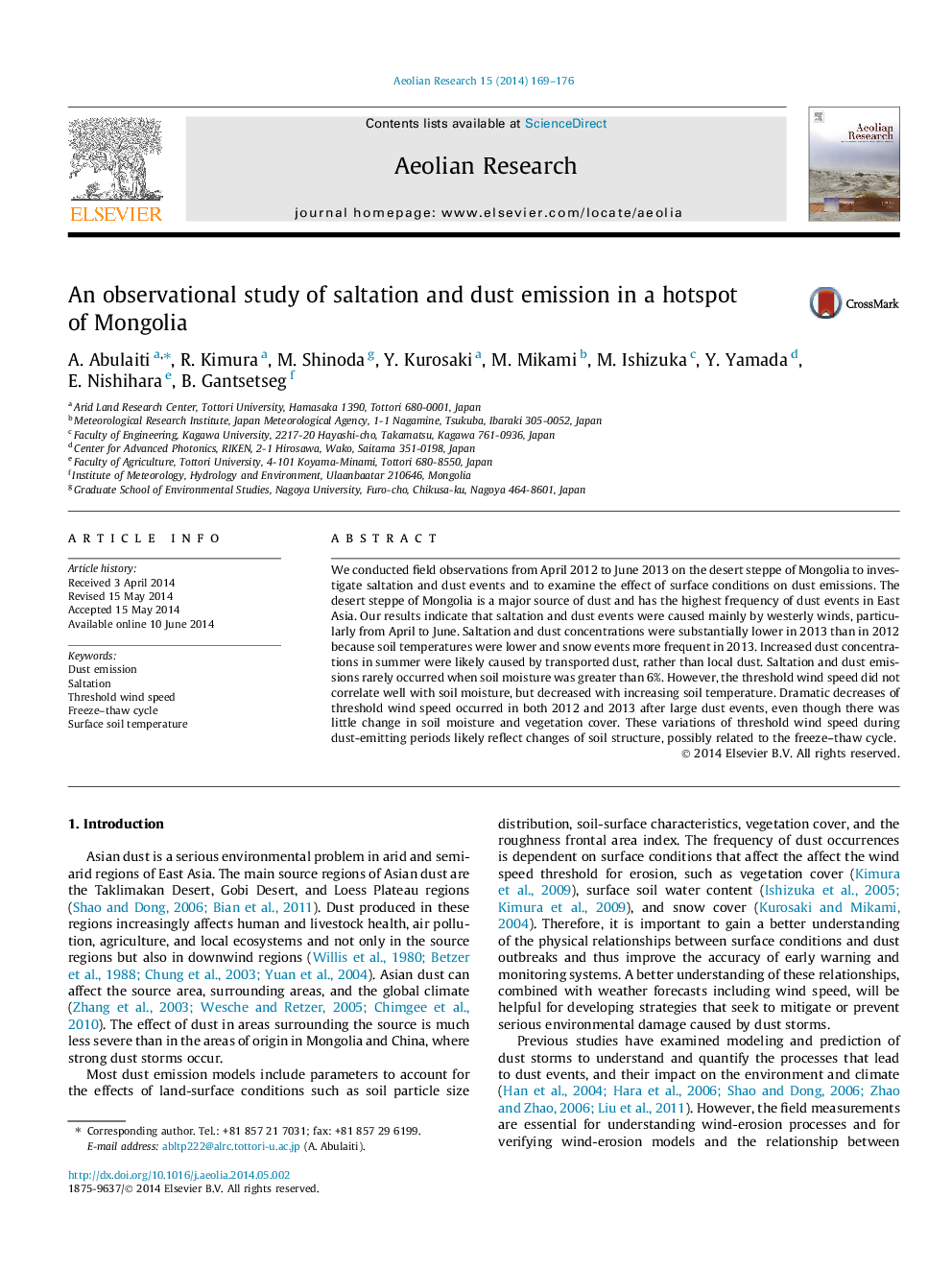| Article ID | Journal | Published Year | Pages | File Type |
|---|---|---|---|---|
| 6426354 | Aeolian Research | 2014 | 8 Pages |
â¢We conducted field observation of saltation/dust in a hotspot of Mongolia.â¢Both saltation and dust concentration decreased when volumetric soil moisture exceeded 6%.â¢Threshold wind speed was higher during freeze-thaw periods during the dust-emitting season.â¢Threshold wind speed decreased dramatically after large dust events.â¢Variations of threshold wind speed during dust-emitting period reflect changes of soil structure.
We conducted field observations from April 2012 to June 2013 on the desert steppe of Mongolia to investigate saltation and dust events and to examine the effect of surface conditions on dust emissions. The desert steppe of Mongolia is a major source of dust and has the highest frequency of dust events in East Asia. Our results indicate that saltation and dust events were caused mainly by westerly winds, particularly from April to June. Saltation and dust concentrations were substantially lower in 2013 than in 2012 because soil temperatures were lower and snow events more frequent in 2013. Increased dust concentrations in summer were likely caused by transported dust, rather than local dust. Saltation and dust emissions rarely occurred when soil moisture was greater than 6%. However, the threshold wind speed did not correlate well with soil moisture, but decreased with increasing soil temperature. Dramatic decreases of threshold wind speed occurred in both 2012 and 2013 after large dust events, even though there was little change in soil moisture and vegetation cover. These variations of threshold wind speed during dust-emitting periods likely reflect changes of soil structure, possibly related to the freeze-thaw cycle.
